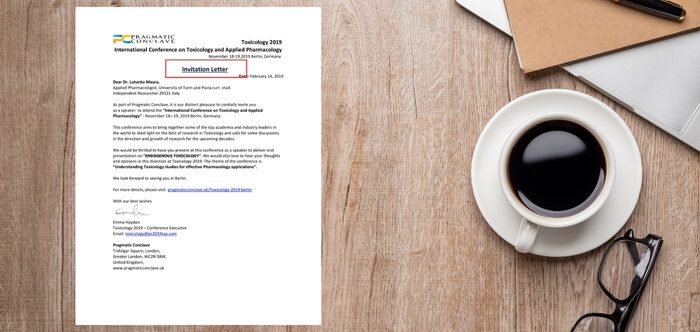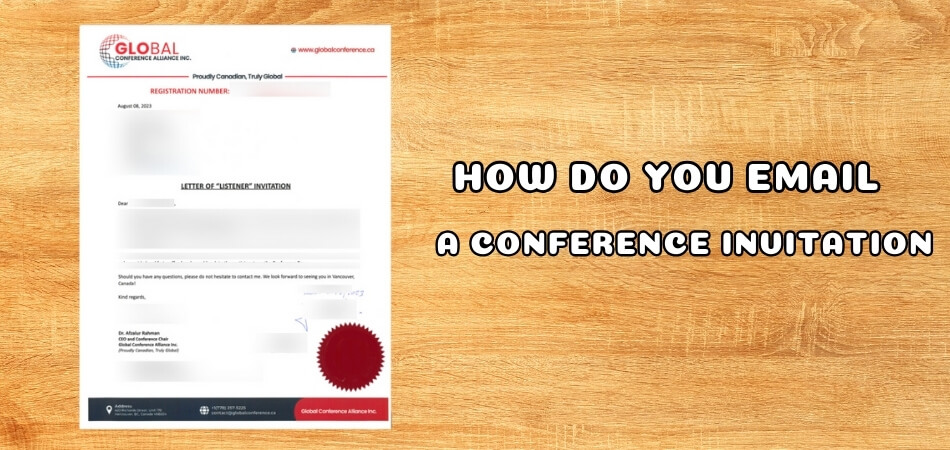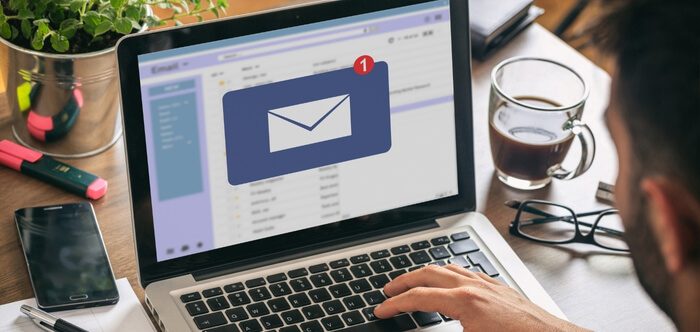Organizing a conference can be overwhelming, with countless details to keep track of. One of the most crucial yet often overlooked aspects is sending out invitations. You might be wondering, how do you email a conference invitation? to ensure a positive response and high attendance. Look no further.
Adopting the proper structure and a captivating tone is essential, just like creating an intriguing subject line, sharing necessary details, laying out the purpose, presenting the agenda, and wrapping it all up with branding.
All these steps come together to craft an effective invite. Dive into this blog post as we delve deep into the nitty-gritty of email conference invitations, ensuring yours stand out and get the attention they deserve.
A Quick Overview of a Conference Invitation Letter
Crafting a compelling conference invitation is an art. It sets the tone, communicates essential details, and elicits interest. A conference invitation letter serves as the first impression of your event. Designed thoughtfully, it can intrigue and captivate potential attendees.
Its primary aim is to provide crucial event information. Beyond just its data, the invitation sets the event’s mood. With the right tone and wording, it can spark curiosity and anticipation. A personalized touch can greatly enhance response rates.
Lastly, essential elements include the date, venue, and purpose. However, additional information, like the agenda, can provide more clarity. Concluding with a warm, inviting note fosters positivity.
Different Types of Conference Invitation Letters
Conference invitation letters are more than just notifications. Their style, tone, and content can significantly influence an attendee’s perception and enthusiasm for the event. Various types cater to diverse audiences, ensuring each invite resonates correctly with its intended recipient.
Formal Invitations
Used for high-stakes, international, or official conferences, formal invitations are precise and to the point. Utilizing professional language, they strictly stick to the essentials: date, time, venue, and agenda. Their purpose is to relay the event details while upholding the gravity and importance of the occasion, ensuring attendees understand the significance and prepare accordingly.
Informal Invitations
Perfect for more casual settings or familiar groups, informal invitations take on a friendlier, more relaxed tone. They might incorporate colloquial language, perhaps even humor, and are typically used for internal team meetings, workshops, or close-knit community gatherings. The emphasis is on creating an atmosphere of ease and camaraderie.
Speaker Invitations
Speakers can be the highlight of an event. Invitations for them should reflect their importance, outlining why their expertise is valued. This type should detail the event’s audience, objectives, and how the speaker’s contribution aligns with the theme, ensuring a sense of respect and excitement for potential collaboration.
Sponsor Invitations
Sponsors play a pivotal role in the success of many events. Their invitations must highlight the symbiotic relationship between the event and the sponsor. Detailing the benefits, audience demographics, and potential return on investment ensures sponsors understand the mutual advantages of collaboration.
Virtual Conference Invitations
With the increasing shift towards digital, virtual conferences have become commonplace. These invites should elaborate on the tech platform, accessibility features, and any support available for attendees unfamiliar with the tools. It’s essential to convey the experience’s value, emphasizing unique digital perks or interactive opportunities.
Understanding the distinct nature and requirements of each type of conference invitation is paramount. It’s about relaying information and building excitement, respect, and understanding among potential attendees, speakers, and sponsors.
How Do You Email a Conference Invitation?
Emailing a conference invitation requires a combination of precision, professionalism, and a touch of personalization to ensure it’s effective and prompts a positive response. Here’s a step-by-step guide on how to email a conference invitation:
Step- 1. Compelling Subject Line
- The first impression counts. Your subject line should not only capture attention but also convey urgency or exclusivity.
- Use action words or highlight keynote speakers to draw interest.
- Examples include “Unlock Industry Secrets with [Keynote Speaker’s Name]” or “Priority Invite: [Conference Name] – Limited Seats!”
Step- 2. Personalized Greeting
- Personalization can significantly increase open rates.
- Using the recipient’s first name or company name demonstrates that this isn’t a mass, impersonal email.
- Tools like email marketing software can help automate this for larger audiences.
Step- 3. Purpose Introduction
- Clarify the intent of your email quickly. This sets the stage and provides context.
- Mention key benefits of attending or unique selling points of the conference.
- Highlight any renowned speakers, groundbreaking sessions, or networking opportunities.
Step- 4. Detailed Information
- Beyond just the date and time, mention the format (e.g., virtual, hybrid, in-person) and any tools or platforms attendees might need.
- Include details on any cost, accommodation options, or logistical points like parking.
- Highlight any partners, sponsors, or big names associated with the conference.
Step- 5. Agenda Overview
- This offers attendees a glimpse of the event’s flow.
- Highlight themes, key topics, and breaks. Knowing there’s ample downtime or networking slots can be a draw.
- Mention any special events like workshops, panels, or Q&A sessions.
Step- 6. Personal Touch
- Relating to a past interaction can rekindle rapport and increase the likelihood of a positive response.
- Personal anecdotes or references can set your invitation apart from generic ones.
- Mention mutual acquaintances, past meetings, or shared experiences if applicable.
Step- 7. RSVP Essentials
- Specify a deadline for responses. This creates a sense of urgency and aids in planning.
- If using a registration platform, ensure the link is visible and functional.
- Provide options if applicable, like attending specific sessions or dietary preferences.
Step- 8. Contact Point
- Ensure attendees know how to reach out with queries.
- Highlight a dedicated helpline, if available, or provide direct contact details.
- Emphasize responsiveness to reassure potential attendees.
Step- 9. Branded Signature
- This reinforces professionalism and brand identity.
- Include a logo, title, and any social media or website links.
- Add any certifications or affiliations that boost credibility.
Step- 10. Attachments and Links
- Avoid clutter by embedding links or using icons.
- Ensure attached files are appropriately named and virus-free.
- For bigger files, consider cloud links or portal access.
Step- 11. Gratitude Expression
- A simple “thank you” can establish goodwill.
- Express eagerness to see the recipient at the conference.
- Highlight their value or potential contribution to the event.
Step- 12. Timely Follow-ups
- Reminders can boost attendance rates.
- Ensure these are spaced appropriately and don’t come off as nagging.
- Highlight any updates or new announcements in follow-up emails.
Crafting a conference invitation requires a balance of information, persuasion, and personal touch. Each step plays a pivotal role in converting a recipient into an attendee.
Considerations While Sending Conference Invitations Through Email
Email remains a primary medium for conference invitations. Ensuring effectiveness demands several considerations, from design to delivery.
- Recipient List Accuracy: Double-check email addresses for errors. Incorrect or outdated addresses can reduce reach and impact response rates.
- Mobile Optimization: Many access emails on mobile devices. Ensure invitations are displayed correctly on various screens to enhance user experience.
- Clear Call to Action: Every email should drive an action. Incorporate visible RSVP buttons or links, guiding recipients on the next steps.
- Avoiding Spam Triggers: Overly promotional language can land emails in spam. Use neutral wording and test emails to avoid spam filters.
- Personalization Elements: Personal touches improve engagement. Use recipients’ names or relevant details to foster connection and intrigue.
- Concise Content: Lengthy emails deter readers. Convey the essence quickly, prioritizing essential information and benefits of attending.
- Visual Elements: Images or graphics can elevate invitations. Choose relevant visuals, but ensure they don’t overpower the main content.
- Relevant Subject Lines: Subject lines determine open rates. Craft compelling, concise subjects that accurately reflect the email’s core message.
- Feedback Mechanism: Recipients might have questions. Include easy ways to reach out, facilitating dialogue and clarifications.
- Multiple Reminders: One email might go unnoticed. Consider sending periodic reminders, but avoid overwhelming recipients.
Crafting the perfect conference invitation email goes beyond just conveying information. It’s about engaging, intriguing, and ensuring your potential attendees see value and relevance in your event.
Pros and Cons Sending a Conference Invitation Through Email
Email has revolutionized conference invitations, offering speed and efficiency. Yet, like all methods, it has its advantages and drawbacks.
Pros:
- Cost-Effective: Email eliminates printing and postage costs, offering a budget-friendly alternative to traditional invites.
- Immediate Delivery: Send invitations globally within seconds, ensuring quick dissemination and timely notifications.
- Easy Tracking: Utilize analytics to gauge open rates, link clicks, and overall engagement.
- Personalization: Tailor content for specific audiences, increasing relevance and connection.
- Flexibility: Modify, update, or resend information quickly based on feedback or event changes.
- Eco-Friendly: Digital invitations reduce paper waste, supporting sustainability.
- Integrated Features: Embed videos, links, or RSVP tools for interactive and comprehensive invites.
Cons:
- Overlooked in Clutter: With numerous emails daily invites risk being lost or ignored.
- Spam Filters: Some emails might be directed to spam folders, decreasing visibility.
- Technical Issues: Recipients may face challenges like images not loading or links breaking.
- Limited Personal Touch: The digital format might need a more tangible, personal feel of physical invites.
- Security Concerns: Potential risks of phishing or scams might make recipients hesitant to click links.
While email invitations streamline the process and offer numerous benefits, being mindful of their limitations ensures better planning and effectiveness. It’s about striking a balance for optimal results.
Final Considerations
Emailing conference invitations has undeniably transformed the way we communicate event details, blending efficiency with modernity. When pondering the question, how do you email a conference invitation?
It’s evident that the answer isn’t solely about the technical process but encompasses a deeper understanding of engagement, personalization, and adaptability.
To ensure your conference invitation stands out amidst the digital clutter, merging the art of persuasion with a meticulous strategy is key. By weighing the pros and cons, organizers can tailor their approach, ensuring their invitations are not only noticed but also resonate with the intended audience, ultimately driving attendance and making the event a success.








